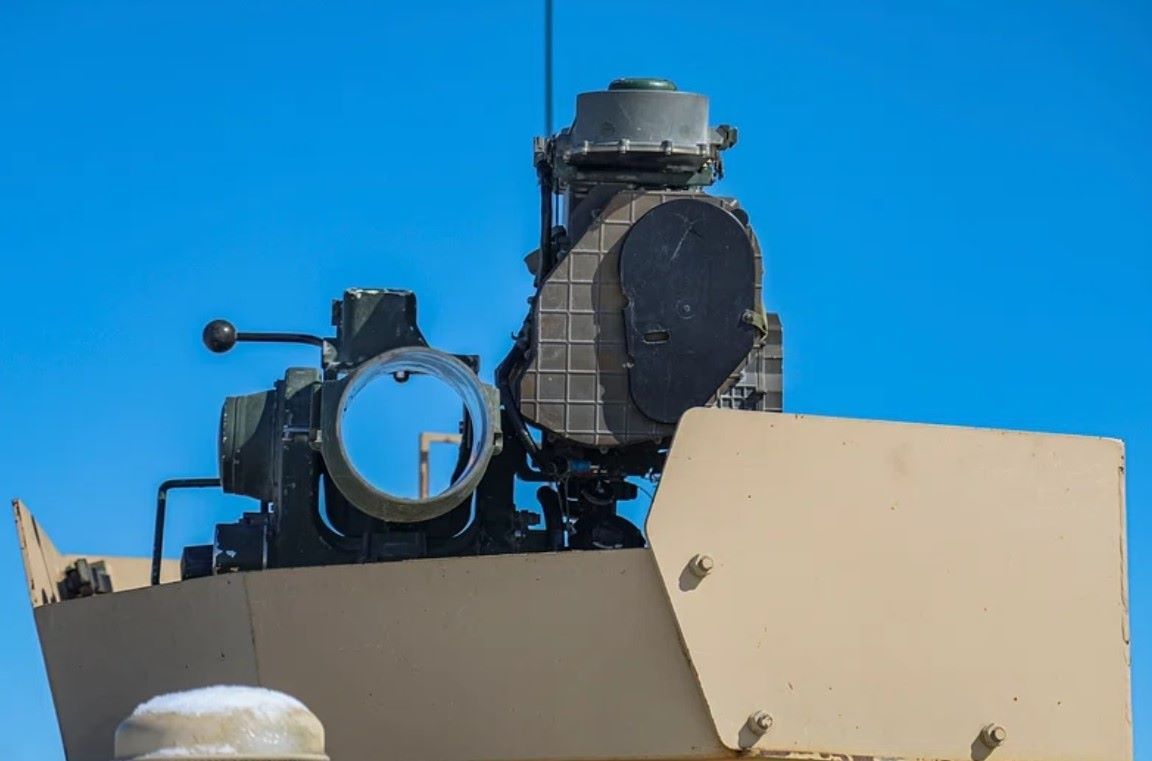British Army Tests Portable Laser for Anti-Drone Defence
Counter drone systems step into the future with laser weapon systems mounted on armoured vehicles.

The fighting in Ukraine has shown the world the importance of drones and drone technology on the battlefield. It has also left military analysts and Army chiefs scrambling for ways to defend against this new threat.
One possible solution to drone dominance may come from the deployment of laser weapons, with the UK Ministry of Defence (MoD) announcing the successful testing of a laser weapon against multiple incoming drones.
As the MoD press release explains, “The laser was integrated onto a Wolfhound – a protected troop-carrying vehicle - where soldiers from 16 Royal Artillery were able to track and down hovering targets at Radnor Range in mid-Wales.”

Specifically, the weapon uses sophisticated sensors and tracking systems that maintain lock-on and targeting to steer a powerful beam of infrared light in the form of energy towards its target.
“In the live test, the soldiers destroyed dozens of quadcopter drones,” the MoD reports. With Warrant Officer Matthew Anderson, a spokesperson for the trials stating that, “While we’ve been testing a variety of distances, speeds and altitudes, one thing has remained – how quick a drone can be taken out. It’s definitely a capability that could be added to the arsenal of weapons that we use on the battlefield.”
The UK’s Land Laser Directed Energy Weapon Demonstrator program had already proved its effectiveness against single targets by shooting down a test drone at a range of more than 1km. But these latest experiments prove the weapons manoeuvrability and an ability to destroy multiple targets.
The trials follow the U.S. Army’s recent testing of laser-equipped Stryker combat vehicles, while the French military deployed a vehicle-mounted prototype anti-drone laser as a counter-terrorism weapon during the 2024 Olympic Games in Paris.

“This is still an emerging technology, but the world has changed and we are seeing more use of drones in the battlespace,” notes Stephen Waller of the UK MoD’s Defence Equipment & Support organization. “This requires a more cost-effective solution to protect our troops.”
“This ground-breaking technology demonstrates Britain’s commitment to staying at the forefront of military innovation,” says Maria Eagle, Minister for Defence Procurement and Industry. “The successful testing of this laser weapon system represents a significant step forward in our development of possible future defence capabilities and showcases British engineering excellence.”
“Having the capability to track and eliminate moving drones will give U.K. troops a better operational advantage and these successful trials have demonstrated that we are well on our way to achieving this,” added Waller.
Related articles: Superior Electronic Defence is Making this Drone a Game-Changer or The War in Ukraine: A New Era for Drone Manufacturing
Laser weapons have emerged as a formidable counter-drone system, offering several distinct advantages that set them apart from traditional kinetic weaponry.
One of the primary benefits lies in their cost-effectiveness. For example, one of the UK’s other experimental laser weapons, the £100 million DragonFire can reportedly fire for less than £10 a shot. This makes laser weapons a low-cost alternative to conventional defences such as ground-to-air missiles, rockets loaded with metal balls, net-firing drones, and cannons with airburst weapons which are far more expensive.
Their accuracy is another significant advantage. Lasers travel at the speed of light, allowing for precise targeting that minimizes collateral damage—a crucial consideration in urban environments where drones pose risks to civilian safety. Laser weapons come with an almost infinite supply of ammunition.

However, they also come with notable disadvantages. For instance, laser systems require substantial power sources and cooling mechanisms to function effectively over extended periods. Additionally, their effectiveness can be hindered by atmospheric interference—such as fog or rain—which may scatter the beam and affect its range and precision.
Despite these challenges, laser weapons show great promise as an affordable and highly accurate method of countering the impact of battlefield drones. A method that has even been adapted to destroy or mis-guide incoming missiles and enemy aircraft.
“The successful testing of the Laser Directed Energy Weapon demonstrator is an important step towards a future capability,” says Matt Cork, Head of Team Hersa Dstl, who are partnered with the British Army for the laser weapon’s development. “This technology has the potential to offer a credible and cost-effective means to defeat a range of current and future threats, which would improve the effectiveness of our armed forces.”
Photo credit: Raw Pixel, Flickr, Getarchive, & Gencraft

